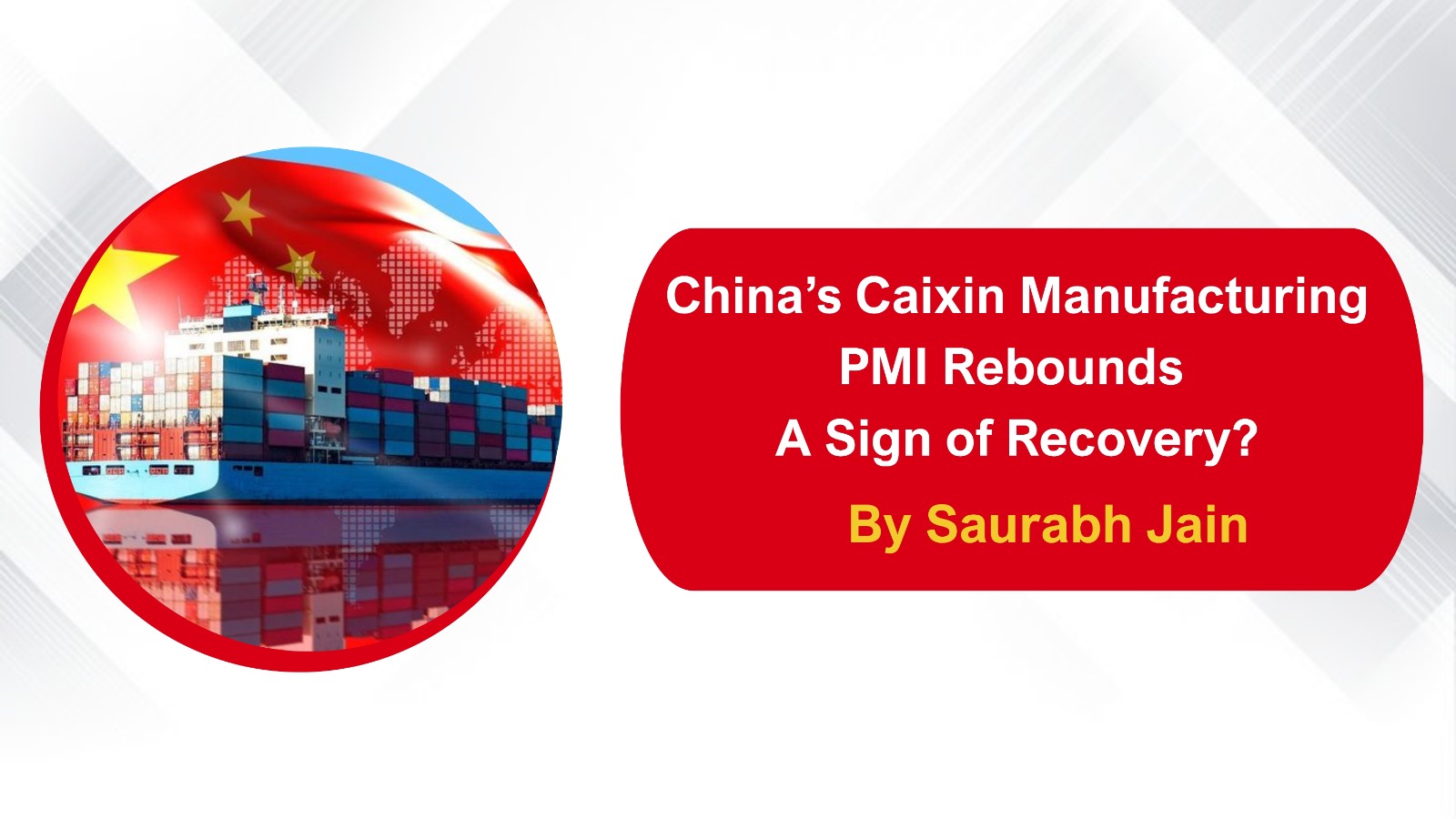China’s Caixin Manufacturing PMI Rebounds A Sign of Recovery?

China’s Caixin Manufacturing PMI Rebounds A Sign of Recovery?
The latest data from China offers a glimmer of optimism for global markets, especially in Asia, as the country’s manufacturing sector shows fresh signs of life.
Caixin Manufacturing PMI Rises to 50.4 in June
On 1st July 2025, the Caixin Manufacturing Purchasing Managers’ Index (PMI) for China came in at 50.4 for June, up sharply from 48.3 in May.
A PMI reading:
- Above 50 indicates expansion in manufacturing activity.
- Below 50 indicates contraction.
This improvement reflects renewed momentum in China’s factory activity, giving traders, investors, and economists a reason to be cautiously optimistic about Asia’s largest economy.
How Does This Compare to the Official Government PMI?
Interestingly, this private survey from Caixin follows the official National Bureau of Statistics (NBS) PMI, which has remained below 50 for the third consecutive month, signaling contraction.
The contrast:
- Official PMI tends to focus on larger, state-owned enterprises.
- Caixin PMI typically covers smaller, private-sector firms and export-oriented manufacturers.
The rebound in the Caixin index suggests that smaller businesses and exporters may be stabilizing faster, possibly helped by new orders, slight improvement in demand, and easing input cost pressures.
How Will This Impact the Indian Market?
China’s economic data has a direct and indirect impact on Indian markets because of global trade linkages, commodity demand, and investor sentiment. Here’s how this PMI rebound affects India:
1 Boost for Commodity Stocks
A stronger Chinese manufacturing sector typically leads to higher global demand for industrial metals (copper, aluminum, steel) and energy commodities (crude oil, coal).
This can benefit commodity-linked Indian companies like:
- Hindalco, Tata Steel, JSW Steel (metals)
- ONGC, Reliance Industries (energy)
2 Positive Sentiment for Emerging Markets
A stabilizing Chinese economy reduces global risk-off sentiment and strengthens capital flows into Asian emerging markets, including India.
This can:
- Encourage FII (Foreign Institutional Investor) inflows
- Support Indian equity indices like Nifty 50 and Sensex
3 Currency Impact
Higher commodity demand may put pressure on the Indian Rupee due to a possible increase in India’s import bill (especially crude oil).
However, if overall Asian sentiment improves, it could limit downside for the rupee.
4 Global Trade Dynamics
Improved Chinese demand could lift India’s exports of chemicals, pharmaceuticals, and engineering goods, benefiting listed companies in these sectors.
Conclusion
While it’s too early to call this a full-fledged recovery, the improvement in the Caixin Manufacturing PMI to 50.4 provides a welcome sign of stabilization in China’s factory sector. For India, this is good news for metal, energy, and export sectors, while also improving overall market sentiment.
Traders should watch commodity prices, FII inflows, and Nifty’s sectoral performance in the coming sessions.
By Saurabh Jain
This content is for educational and knowledge purposes only and should not be considered as investment or Trading advice. Please consult a certified financial advisor before making any investment or Trading decisions.
Our Recent FAQS
Frequently Asked Question &
Answers Here
Q1. What is the Caixin Manufacturing PMI?
It’s a monthly survey of purchasing managers in China’s private and export-oriented manufacturing sector, measuring business conditions like new orders, production, employment, and supplier delivery times.
Q2. What does a PMI reading of 50.4 mean?
Q3. How is the Caixin PMI different from the official PMI?
Q4. Why is this data important for stock markets?
Q5. What is the impact of this data on the Indian market?
Copyright © By Empirical F&M Academy. Design & Developed by Techno Duniya


.jpg)


.jpeg)




